GLAUCOMA
 American Glaucoma Society Subspecialty Day Lecture: The Use of Mitomycin-C in Traditional and Novel Glaucoma Surgeries, presented by Michele C. Lim, MD.
American Glaucoma Society Subspecialty Day Lecture: The Use of Mitomycin-C in Traditional and Novel Glaucoma Surgeries, presented by Michele C. Lim, MD.
When: Friday, 11:17-11:49 a.m., during Glaucoma Subspecialty Day 2021.
Where: La Nouvelle Orleans AB.
“Although minimally invasive glaucoma surgery (MIGS) dominates much of the conversation of glaucoma surgical management, trabeculectomy surgery still reigns as king when striving for low intraocular pressures. In addition, new ‘bleb-forming’ MIGS are emerging as a tool to fill the glaucoma treatment gap between early and advanced glaucoma, and these surgeries rely on the antifibrotic agent mitomycin-C (MMC). Thus, it is still worthwhile for us to understand how the use of MMC evolved and continues to evolve and how it may affect bleb morphology in both traditional and novel glaucoma procedures.
“The enemy of incisional glaucoma surgery success is the body’s own propensity to heal an open wound, and glaucoma surgeons have tried for decades to modify bleb morphology and function. MMC has been used in trabeculectomy surgery since 1990, and the traditional method of intraoperative application is with gel-foam sponges. In the past few years, a newer method of MMC application by injection has become widespread among glaucoma surgeons. Many younger ophthalmologists now train with this technique. This lecture will review the evolution of wound-healing modulation and present current literature on the efficacy and safety of MMC delivery by injection. We will pay particular attention to how it may affect bleb morphology in trabeculectomy surgery as well as with the newer bleb-forming minimally invasive glaucoma surgeries.”
Glaucoma Subspecialty Day 2021: Making Glaucoma Care the Big Easy (Friday, 8:01 a.m.-5:03 p.m.) is organized in conjunction with the American Glaucoma Society.
REFRACTIVE SURGERY
 Troutman Award 1: Biomechanics of LASIK Flap and SMILE Cap: A Prospective, Clinical Study, presented by Pooja Khamar, MBBS, MS.
Troutman Award 1: Biomechanics of LASIK Flap and SMILE Cap: A Prospective, Clinical Study, presented by Pooja Khamar, MBBS, MS.
When: Friday, 11:15-11:32 a.m., during Refractive Surgery Subspecialty Day 2021.
Where: New Orleans Theater AB.
“Although refractive procedures like LASIK and small incision lenticule extraction (SMILE) are considered safe and both give us predictable outcomes, there is a lot of debate about which procedure is better in terms of wound healing, biomechanics, and long-term outcomes.
“The cap cut in SMILE requires cuts of smaller span (not a near 360-degree flap) in the anterior stroma of the cornea compared to LASIK. Thus, theoretical models suggested that SMILE would have a biomechanical advantage over LASIK. However, clinical investigations have reported mostly similar biomechanical changes after SMILE and LASIK. Therefore, theoretical models and patient measurements haven’t been in complete agreement.
“With this study, we add a new dimension: to look at the intraoperative biomechanics and actual weakening caused by each of the procedures by using a novel analytical model. This is the first study that has attempted to establish the biomechanical differences between the SMILE cap and LASIK flap cut before the cornea undergoes structural change caused by tissue removal.
“This lecture aims to provide insights into wound healing in refractive surgery and the impact on surgical outcomes.”
Refractive Surgery Subspecialty Day 2021: How Can We Do Better? (Friday, 8:04 a.m.-5:27 p.m.) is the annual meeting of the International Society of Refractive Surgery.
REFRACTIVE SURGERY
 Troutman Award 2: Metabolomic Analysis in Corneal Lenticules From Contact Lens Wearers, presented by Min Li, MD.
Troutman Award 2: Metabolomic Analysis in Corneal Lenticules From Contact Lens Wearers, presented by Min Li, MD.
When: Friday, 11:32-11:47 a.m., during Refractive Surgery Subspecialty Day 2021.
Where: New Orleans Theater AB.
“Soft contact lenses are commonly selected to correct refractive errors instead of glasses. But soft contact lenses are foreign bodies in the eyes. They swim within the tear film, thereby having a direct impact on tear film and tissues, and they have potential side effects, like dry eye, microbial keratitis, and corneal irregularity. So what happens to the cornea when you wear soft contact lenses for a long time? In this talk, I will tell you the answer.”
Refractive Surgery Subspecialty Day 2021: How Can We Do Better? (Friday, 8:04 a.m.-5:27 p.m.) is the annual meeting of the International Society of Refractive Surgery.
RETINA
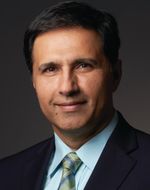 Charles L. Schepens MD Lecture: Advanced Retinal Implants: The Abiotic-Biotic Interface Challenges and Opportunities, presented by Mark S. Humayun, MD, PhD.
Charles L. Schepens MD Lecture: Advanced Retinal Implants: The Abiotic-Biotic Interface Challenges and Opportunities, presented by Mark S. Humayun, MD, PhD.
When: Friday, 9:52-10:57 a.m., during Retina Subspecialty Day 2021.
Where: The Great Hall.
“Intraocular lens implants are the most common implants in the body and have revolutionized sight restoration in patients with cataracts. Similarly, albeit less prevalent, glaucoma implants, including MIGS implants, are an important part of treatment for glaucoma. Implants for retinal diseases have been, for the most part, limited to extraocular implants, such as the various types of scleral buckles. Intraocular implants for retinal indications thus far have been for drug delivery. This talk will provide the background and the current state of micro- and nano-scale retinal implants intended to restore and preserve sight. There will be in-depth discussion about two implants, the Argus II and the CPCB-1, and how the devices overcame many interdisciplinary challenges. Time permitting, the talk will also briefly discuss visual cortical implants to restore sight.”
Retina Subspecialty Day 2021: Emerging Even Stronger (Friday, 8:00 a.m.-4:00 p.m., and Saturday, 8:00 a.m.-5:30 p.m.) is organized in conjunction with the American Society of Retina Specialists, the Macula Society, the Retina Society, and Club Jules Gonin.
UVEITIS
 Jackson Memorial Lecture: Molecular Diagnostics for Ocular Infectious Diseases, presented by Russell N. Van Gelder, MD, PhD.
Jackson Memorial Lecture: Molecular Diagnostics for Ocular Infectious Diseases, presented by Russell N. Van Gelder, MD, PhD.
When: Friday, during Sym48, Opening Session.
Where: The Great Hall.
“Infectious disease in the eye is one of the threads that tie all ophthalmologists together, regardless of specialty. My lecture will present the evolution of molecular diagnostic techniques and preview innovations such as use of handheld, point-of-service sequencers being developed in my lab. We are hopeful that soon we will be able to diagnose any ocular infection definitively while the patient is still in the clinic or emergency room. This cutting-edge research could prove to be a game-changer in ocular infectious disease diagnosis.”
Opening Session (5:00-6:30 p.m.).
NEURO-OPHTHALMOLOGY
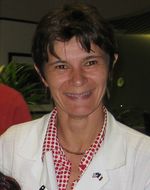 William F. Hoyt Lecture: Acute Retinal Ischemia: Time for Action! presented by Valerie Biousse, MD.
William F. Hoyt Lecture: Acute Retinal Ischemia: Time for Action! presented by Valerie Biousse, MD.
When: Saturday, 8:55-9:14 a.m., during Sym05, Infectious Disease in Neuro-Ophthalmology: It’s Not Just COVID-19.
Where: La Nouvelle Orleans C.
“Acute stroke care and secondary prevention of cerebral and cardiovascular disease have dramatically improved over the past 20 years. Access to specialized stroke centers improves outcome and decreases cost. Numerous recent publications have highlighted the need to manage patients with acute retinal arterial ischemia, as is done with those with acute cerebral stroke. Strategies to educate patients and care providers are being developed to facilitate rapid diagnosis and appropriate triage of patients with acute monocular visual loss. Widespread access to nonmydriatic fundus cameras allows for immediate teleophthalmology diagnosis of acute central retinal artery occlusion, which is the first step toward very early treatment of this devastating condition.”
Infectious Disease in Neuro-Ophthalmology: It’s Not Just COVID-19 (8:00-9:15 a.m.) is cosponsored by the North American Neuro-Ophthalmology Society.
OPHTHALMOLOGY AND THE ARTS
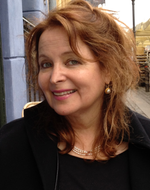 Michael F. Marmor, MD, Lecture in Ophthalmology and the Arts: Self-Taught Art vs. the Mainstream, presented by Alice Yelen Gitter, Senior Curator of Collections Research Emerita at the New Orleans Museum of Art.
Michael F. Marmor, MD, Lecture in Ophthalmology and the Arts: Self-Taught Art vs. the Mainstream, presented by Alice Yelen Gitter, Senior Curator of Collections Research Emerita at the New Orleans Museum of Art.
When: Saturday, 11:30 a.m.-12:30 p.m., during Sym06, Michael F. Marmor, MD, Lecture in Ophthalmology and the Arts.
Where: La Nouvelle Orleans C.
For 35 years, Ms. Gitter was instrumental in developing the New Orleans Museum of Art as an educational as well as artistic resource for a diverse New Orleans community. Notably, she curated and organized the 1992 exhibition Passionate Visions of the American South: Self-Taught Artists from 1940 to the Present, a groundbreaking exhibition that brought American self-taught art to the public eye. Her talk “Self-Taught Art vs. the Mainstream” will explore the beauty and importance of self-taught artwork.
Michael F. Marmor, MD, Lecture in Ophthalmology and the Arts (11:30 a.m.-12:30 p.m.).
ORGANIZED MEDICINE
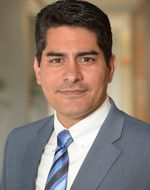 Parker Heath Lecture: Health 2047—Trends, Advocacy & IT Solutions, presented by Bobby Mukkamala, MD.
Parker Heath Lecture: Health 2047—Trends, Advocacy & IT Solutions, presented by Bobby Mukkamala, MD.
When: Saturday, during Sym43V, Innovations in Ophthalmology From Around the World: Intraocular Implants, Artificial Intelligence, and Solutions to Systemic Problems.
Where: Virtual.
“What has COVID-19 revealed about the current state of U.S. health care? This talk takes a look at broad trends in U.S. health care and key advocacy issues for physicians and patients that go far beyond COVID-19. It focuses on the ongoing federal and state advocacy efforts of the American Medical Association and partner organizations, including the work to advance digital health in the clinical setting and to ensure physicians have a voice in the design and creation of new technologies that promise to transform the delivery of care.”
Innovations in Ophthalmology From Around the World: Intraocular Implants, Artificial Intelligence, and Solutions to Systemic Problems (3:45-5:00 p.m.) is cosponsored by the American Medical Association Ophthalmology Section Council.
PATHOLOGY/ONCOLOGY
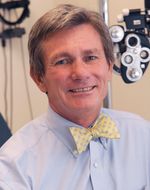 Zimmerman Lecture: Ocular Manifestations of Prion Diseases, presented by R. Nick Hogan, MD, PhD.
Zimmerman Lecture: Ocular Manifestations of Prion Diseases, presented by R. Nick Hogan, MD, PhD.
When: Saturday, 8:49-9:13 a.m., during Sym02, Radiation Treatment for Ocular and Ocular Adnexal Tumors: Updates for the Ophthalmologist.
Where: New Orleans Theater C.
“The prion protein (PrP) was discovered in 1982 by Dr. Stanley Prusiner at the University of California, San Francisco, while I was working in his laboratory. Prions represent novel infectious agents and are etiologic in the development and progression of neurologic disease, specifically Creutzfeldt-Jakob disease and kuru in humans and scrapie and mad cow disease (bovine spongiform encephalopathy) in animals. PrP, a misfolded protein, self-replicates without involving DNA or RNA; forms insoluble fibrils; and causes alteration in cell function and structure. This can lead to cell death, and when occurring in critical sites, results in considerable morbidity and can even result in death.
“Prion-induced cellular alterations in the eye and visual pathways manifest significant changes in vision with perturbations in the retina, optic nerve, and visual cortex. Additionally, prion-infected ocular tissues retain infective potential, and transmission of disease has occurred in corneal transplant recipients. This has substantial ramifications for ocular surgery in general, with potential contamination of surgical instruments of concern.
“This lecture will summarize PrP involvement in prion-induced diseases and review the current knowledge of prion pathophysiology relative to the visual system. Tissue infectivity with PrP and the resultant risk of disease transmission will be examined.”
Radiation Treatment for Ocular and Ocular Adnexal Tumors: Updates for the Ophthalmologist (8:00-9:15 a.m.) is cosponsored by the American Association of Ocular Oncology and Pathology.
PEDIATRIC OPHTHALMOLOGY
 Marshall M. Parks Lecture: The Importance of the Conjunctiva in Strabismus and Strabismus Surgery, presented by Monte A. Del Monte, MD.
Marshall M. Parks Lecture: The Importance of the Conjunctiva in Strabismus and Strabismus Surgery, presented by Monte A. Del Monte, MD.
When: Saturday, 10:35-11:00 a.m., during Sym03, Management of Pediatric Ocular Trauma.
Where: New Orleans Theater C.
“The conjunctiva plays a significant role in the motility of the globe and circulation to the anterior segment. Thus, while several factors—including proper evaluation of the anatomy and physiology of the conjunctiva, selection of incision technique, wound placement, and optimal wound closure—are important to the success of any strabismus procedure, they play a critical role in achieving optimal outcomes of complex strabismus surgical procedures.
“This lecture will discuss recent information concerning conjunctival anatomy and draw on my experience concerning best practices for conjunctival incision and management to improve strabismus surgical success. Of note, this was an interest of Dr. Marshal Parks.”
Management of Pediatric Ocular Trauma (9:45-11:00 a.m.) is cosponsored by the American Association of Pediatric Ophthalmology and Strabismus.